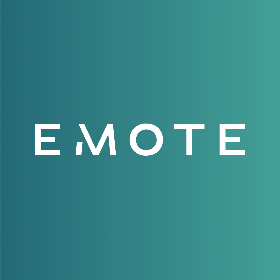A Guide to Defining, Setting, and Achieving Social Media Goals
When a client asks, “Why aren’t we gaining more followers?” or “How do our social channels increase our revenue?” it’s a signal to revisit your social media goals.
Goals are no longer vanity targets like hitting 10,000 followers. They’ve become the foundation for meaningful results and client satisfaction. Whether it’s growing brand awareness, increasing website traffic, or boosting conversions, clear, actionable goals make it easier to prove the value of your agency’s work.
Consider this scenario, for example: You’re managing social media for a local retail client. They want more likes on Instagram, but their ultimate priority is driving in-store sales. Without a clear goal, you might focus on creating content that racks up engagement metrics—shares, likes, and comments—but doesn’t motivate customers to visit the store. If your agency has aligned with the right goal (in-store traffic), your team will shift to strategies like promoting time-sensitive offers or showcasing customer testimonials that encourage action. Suddenly, your efforts have measurable value tied to their bottom line.
Setting and achieving social media goals requires defining objectives that align with broader business priorities, breaking goals into achievable steps, and choosing the right metrics to track progress. At the end of the day, it’s all about communication. Clear updates on what’s working, why it matters, and how it impacts the client’s success help build trust and demonstrate your agency’s expertise.
In this guide, we’ll cover how to define specific social media goals, develop strategies to meet them, and report on results in a way clients can easily understand.
Let’s get started!
What Are Social Media Goals?
Social media goals are specific, measurable objectives that align your clients’ business priorities with their social media strategy. These goals provide a clear direction for campaigns, helping you focus on what matters most—driving results that impact the bottom line.
Instead of vague aspirations like “getting more likes” or “posting consistently,” social media goals should be tied to outcomes such as increasing brand awareness, generating leads, driving website traffic, or boosting conversions.
For example, if a client runs an ecommerce business, a social media goal might be: “Drive a 15% increase in website traffic from Instagram over the next three months.” This goal is tied to a real business outcome and gives your team a measurable target to work toward.
Setting these goals also ensures alignment between your agency and your clients. This cannot be understated.
Defining clear objectives from the outset helps set realistic expectations and shows how social media efforts contribute to overall business success. Ultimately, well-defined goals give campaigns purpose, allow for performance tracking, and make it easier to adjust strategies for better results.
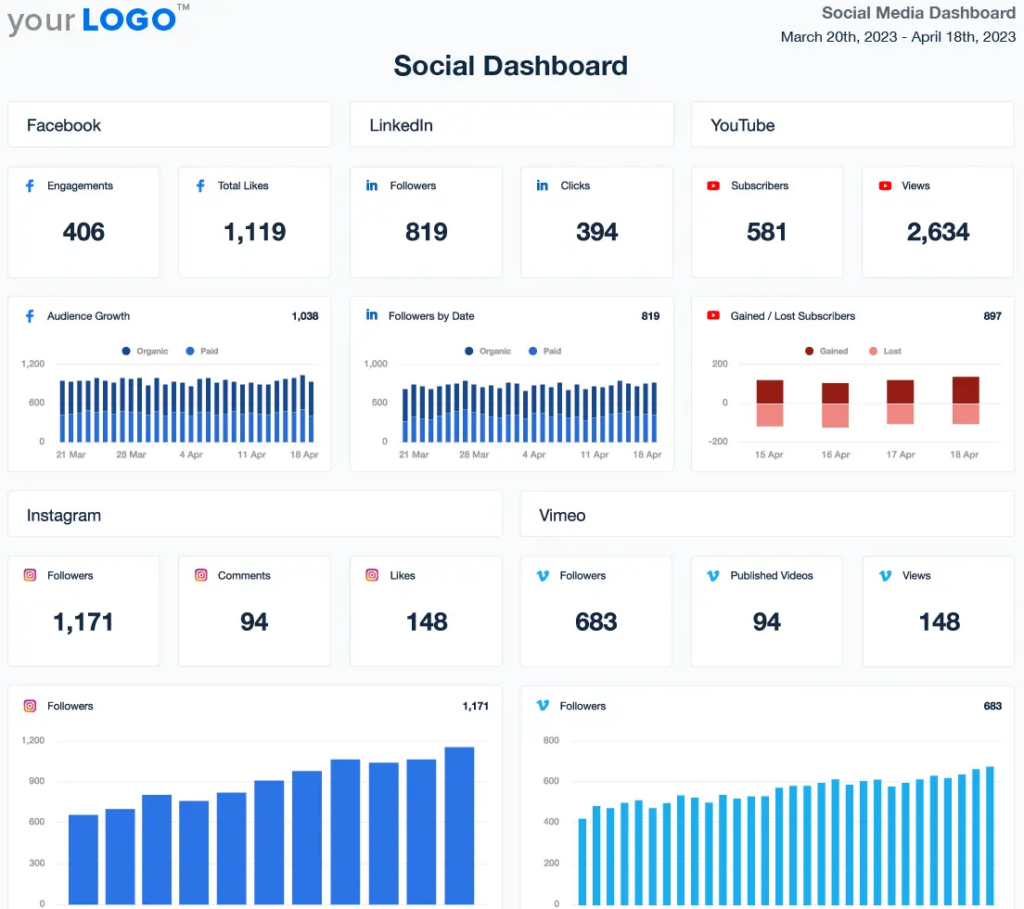
Track your clients’ social media performance with a real-time dashboard that ties metrics directly to their goals. Simplify reporting and prove your value effortlessly. Start your 14-day free trial of AgencyAnalytics today.
Why Do Social Media Marketing Goals Matter?
Social media marketing goals matter because they align efforts with measurable outcomes. For social media managers, goals provide a roadmap for campaigns, guiding content creation, ad strategies, and performance tracking. Without defined objectives, you risk spreading your efforts thin and delivering results that lack context or impact.
From the client’s perspective, clear goals ensure their investment ties back to real business priorities. A restaurant owner, for example, doesn’t just want “more engagement” on Facebook. They want that engagement to translate into reservations or event bookings. When goals like “Increase reservations by 20% through Facebook promotions over three months” are established, both your agency and the client know what success looks like and how to measure it.
Goals also help agencies communicate value to clients. By connecting metrics—like reach, click-through rates, or sales conversions—to predefined goals, agencies show exactly how social media impacts their bottom line. This transparency builds trust, positions your agency as a strategic partner, and helps clients understand the return on their investment.
3 Examples of Social Media Goals
Connecting a client’s goals to business outcomes builds trust and demonstrates the true impact of an SMM’s work. Below are three practical examples of common social media goals, along with actionable steps for achieving, tracking, and communicating success.
1. Brand Awareness
Building brand awareness increases your client’s visibility and introduces their business to a larger audience. This is especially important for clients looking to grow their market presence or launch new products. Agencies can amplify a client’s reach by creating engaging content and leveraging paid promotions.
Goal: Increase brand visibility among a target audience.
How to Achieve It: Social media managers can use a combination of engaging organic content and targeted paid ads to expand reach. This includes using video content, branded hashtags, and collaborations with influencers.
How to Track It: Metrics like impressions, reach, follower growth, and branded hashtag performance provide a clear picture of progress. Tools like social media dashboards help consolidate these metrics for easy tracking.
How to Communicate Results: Show clients how increased impressions and reach align with their goal of brand visibility. For example, “Your Instagram ad campaign reached 50,000 unique users this month, increasing your brand exposure by 25% compared to last month.”
2. Organic Website Traffic
Driving organic traffic to a client’s website ensures their audience takes meaningful actions beyond social platforms. Increasing social-driven traffic can directly impact revenue for businesses that rely on blog readership, online sales, or product discovery.
Goal: Drive more visitors to the client’s website through social media.
How to Achieve It: Share blog posts, product pages, or promotions with strong CTAs that direct users to the website. Optimize social media bios with links and use platform-specific tools like Instagram Stories’ link stickers or Facebook posts.
How to Track It: Use UTM parameters and tools like Google Analytics to track social media-driven website traffic. Focus on sessions, bounce rates, and specific traffic sources.
How to Communicate Results: Highlight the increase in traffic and tie it to conversions if possible. For example, “Social media drove 3,500 visitors to your website this month, a 15% increase, with a notable spike from Facebook posts linking to your fall sale.”
3. Generate New Leads
Generating leads helps clients connect with potential customers who are ready to learn more about their offerings. Social media platforms offer great tools for capturing leads, from targeted ads to gated content.
Goal: Capture leads that can be nurtured into customers.
How to Achieve It: Create lead generation campaigns using gated content like eBooks, webinars, or giveaways. To streamline the process, use lead forms on platforms like Facebook and LinkedIn.
How to Track It: Monitor form submissions, sign-ups, and cost-per-lead. Platforms like AgencyAnalytics with CRM integrations help capture and track lead data.
How to Communicate Results: Demonstrate lead volume and value. For example, “Your LinkedIn ad campaign generated 150 leads at a cost of $8 per lead, giving you a solid pool to nurture into potential clients.”
5 Steps To Set Up Social Media Goals
Step 1: Align Goals with Business Objectives
The first step to setting social media goals is ensuring they align with a client’s overall business objectives. Whether the focus is increasing brand awareness, driving website traffic, or generating leads, your social media strategy should support their bigger-picture goals.
If a client’s objective is to grow online sales, a relevant goal could be “Increase website traffic from social media by 20% over three months.”
Step 2: Use the SMART Framework with MASTER Goals
Use the SMART framework—Specific, Measurable, Achievable, Relevant, and Time-bound to ensure your goals are actionable.
For social media managers looking to take it a step further, consider the MASTER method: Measurable, Achievable, Specific, Transforming, Evolving, and Reassessed.
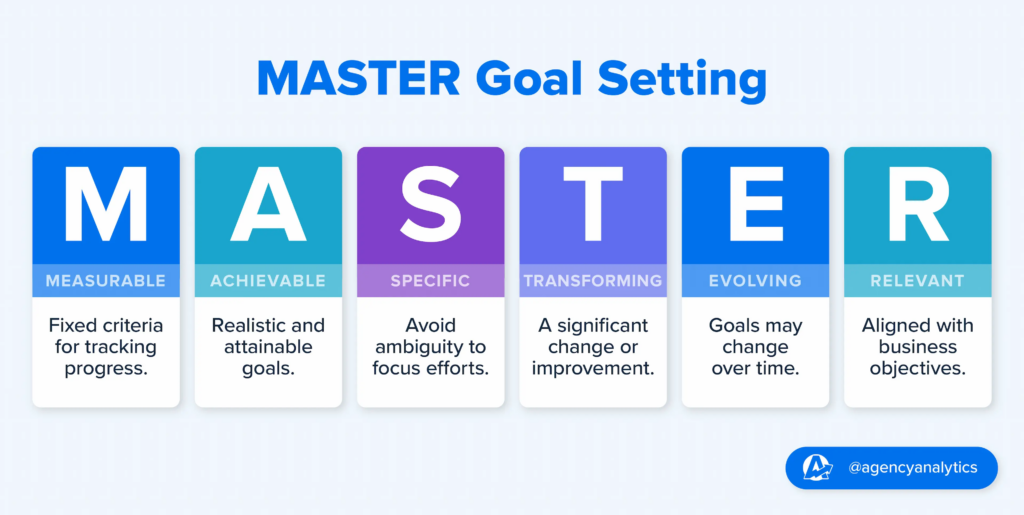
MASTER goals ensure consistent tracking, evaluation, and optimization. For example, rather than “get more followers,” a MASTER goal would be “Gain 1,000 new Instagram followers in 60 days by running a targeted giveaway campaign.”
Step 3: Identify Key Metrics and KPIs
Once goals are set, determine the metrics and KPIs that will measure success. For example, impressions and reach align with brand awareness, while traffic and conversions measure website performance. To streamline this process, use tools like AgencyAnalytics’ social media report templates to track KPIs in one place.
These templates consolidate key social media metrics, making it easier to monitor progress and confidently report back to clients.
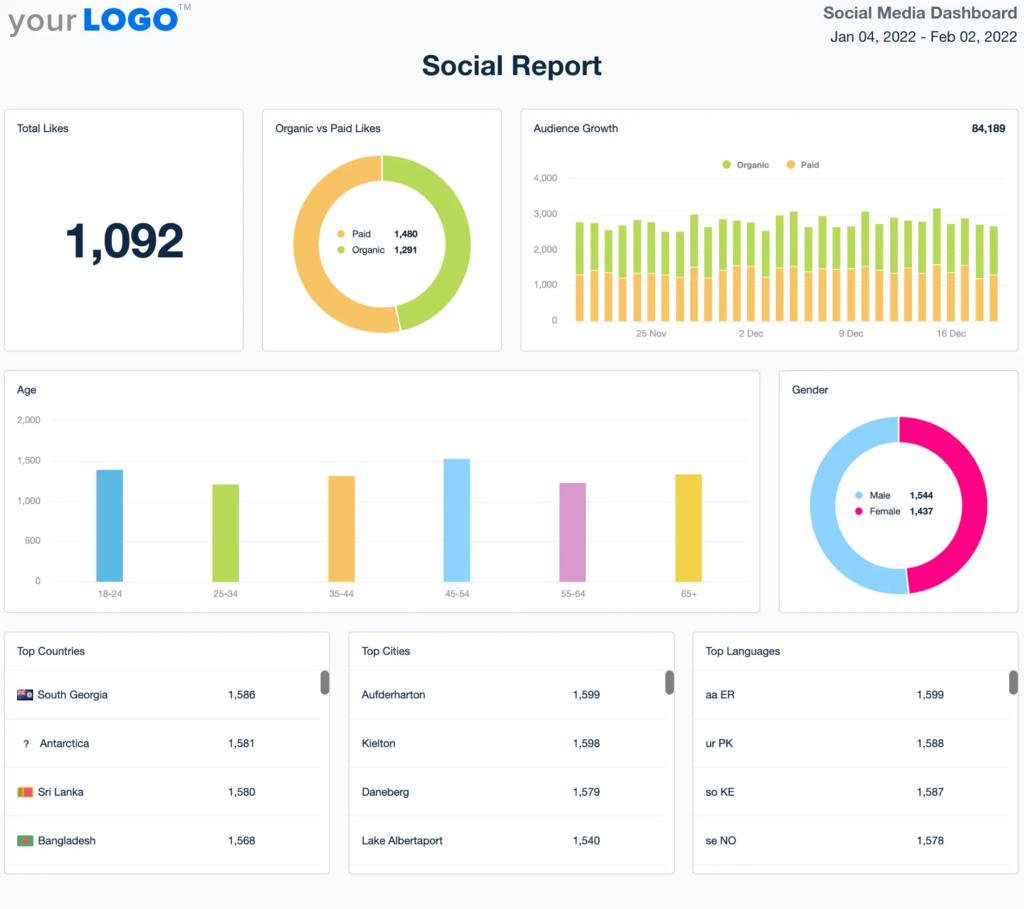
Step 4: Execute the Plan
With goals and KPIs in place, it’s time to execute. This includes scheduling posts, engaging with the audience, and testing content types to see what resonates best.
Use A/B testing to identify top-performing content, whether it’s videos, carousel posts, or ads. Staying consistent and responsive during this phase ensures strategies remain aligned with client goals.
Step 5: Track, Report, and Optimize
Tracking performance is essential to improving outcomes over time. Use a real-time social media dashboard from AgencyAnalytics to monitor performance across platforms, identify trends, and make data-driven adjustments.
For example, if engagement on Instagram Stories outperforms posts, focus efforts there. Presenting up-to-date insights clearly demonstrates how your agency’s social media efforts are driving progress toward client goals.
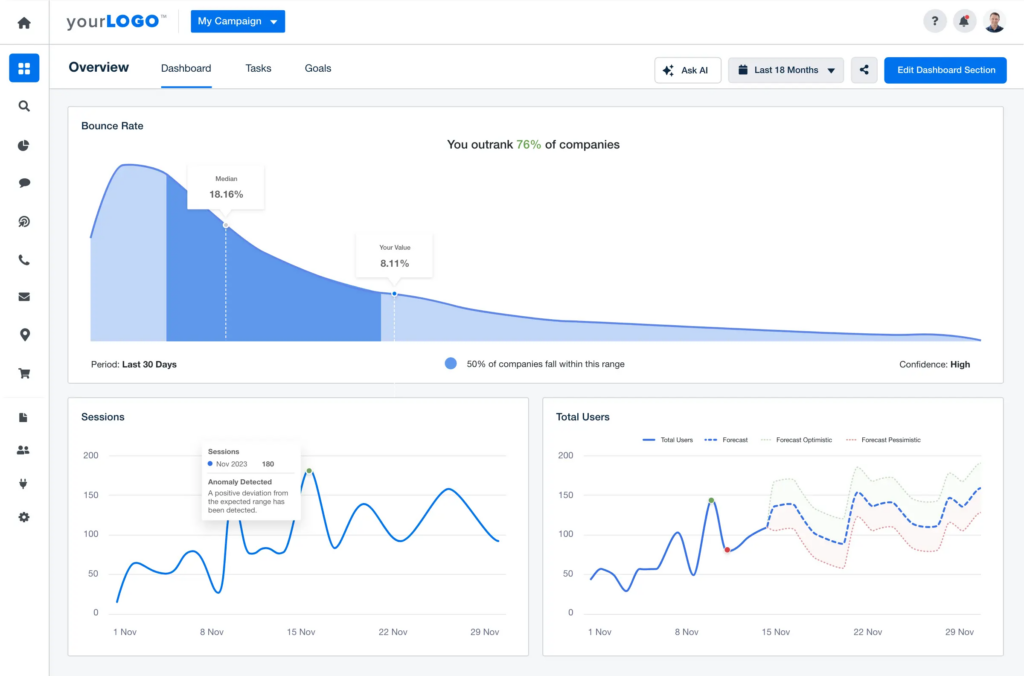
Clients want to know how their social media performance stacks up against their competition. With AgencyAnalytics’ new Insights feature, compare your client’s social metrics against data from other businesses in the same industry.
Summary & Key Takeaways
Setting clear social media goals and tracking performance doesn’t have to be complicated. Reporting will be a breeze if your agency starts with well-defined objectives from the beginning.
Use tools like AgencyAnalytics as your secret weapon to simplify reporting and deliver impressive results for your clients. With customizable report templates and over 80 marketing platform integrations, your team will skip the hassle of switching between different tools and spreadsheets and be able to focus on optimizing campaigns.
Establishing goals from the beginning ensures that you and your clients are aligned on expectations, making it easier to measure, refine, and overachieve their targets. When your agency consistently delivers on goals, you become the strategic partner your clients can trust.
Here are some key takeaways to remember:
- Start with SMART or MASTER goals to create measurable, actionable targets that align with business objectives.
- Track key metrics and KPIs using real-time dashboards to measure performance and identify opportunities for optimization.
- Leverage customizable reporting tools like AgencyAnalytics to communicate results clearly and make your agency shine.
Defining goals, tracking progress, and optimizing strategies means that your agency meets client expectations and consistently exceeds them—proving your value every step of the way.







